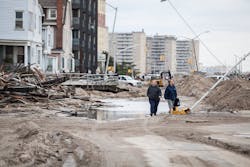White paper promotes incentives for improved disaster resilience
By Peter Fabris, Contributing Editor
The National Institute of Building Sciences has released a new white paper calling for sweeping action to improve the nation’s resilience to natural disasters.
“The current methods to incentivize investment in resilience strategies rely on three primary mechanisms: federal grant programs (with some support from private foundations); insurance premium discounts for implementing measures to reduce vulnerability; and the political will of communities, either in the wake of a disaster or before an event occurs, through the foresight of community champions,” NIBS says. “While these approaches have provided a level of resilience, they have taken the nation only so far.”
The white paper “Developing Pre-Disaster Resilience Based on Public and Private Incentivization” makes the case that the most cost-effective manner to achieve resilience is through a holistic and integrated set of public, private, and hybrid programs based on capturing opportunities available through mortgages and loans; insurance; finance; tax incentives and credits; grants; regulations; and enhanced building codes.
The white paper identifies a number of possible strategies that stakeholders can use, as the next step, to begin developing the public-private incentives to support resilience. With these approaches, the MMC/CFIRE team hopes that in time, promoting and implementing resilience will become part of common business practices, and integral to maintaining and enhancing the nation’s economy.
